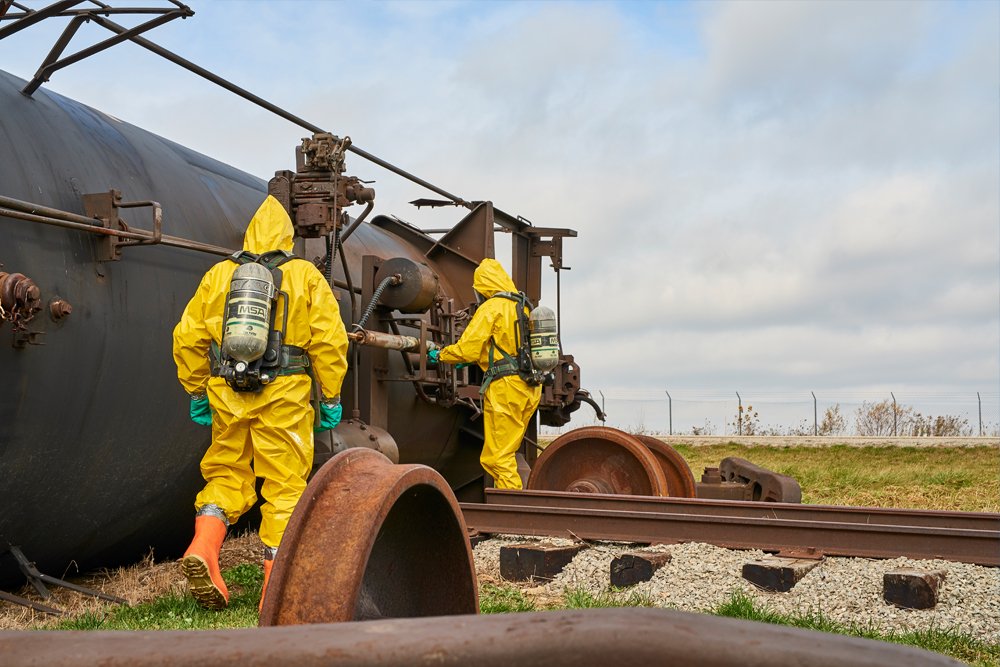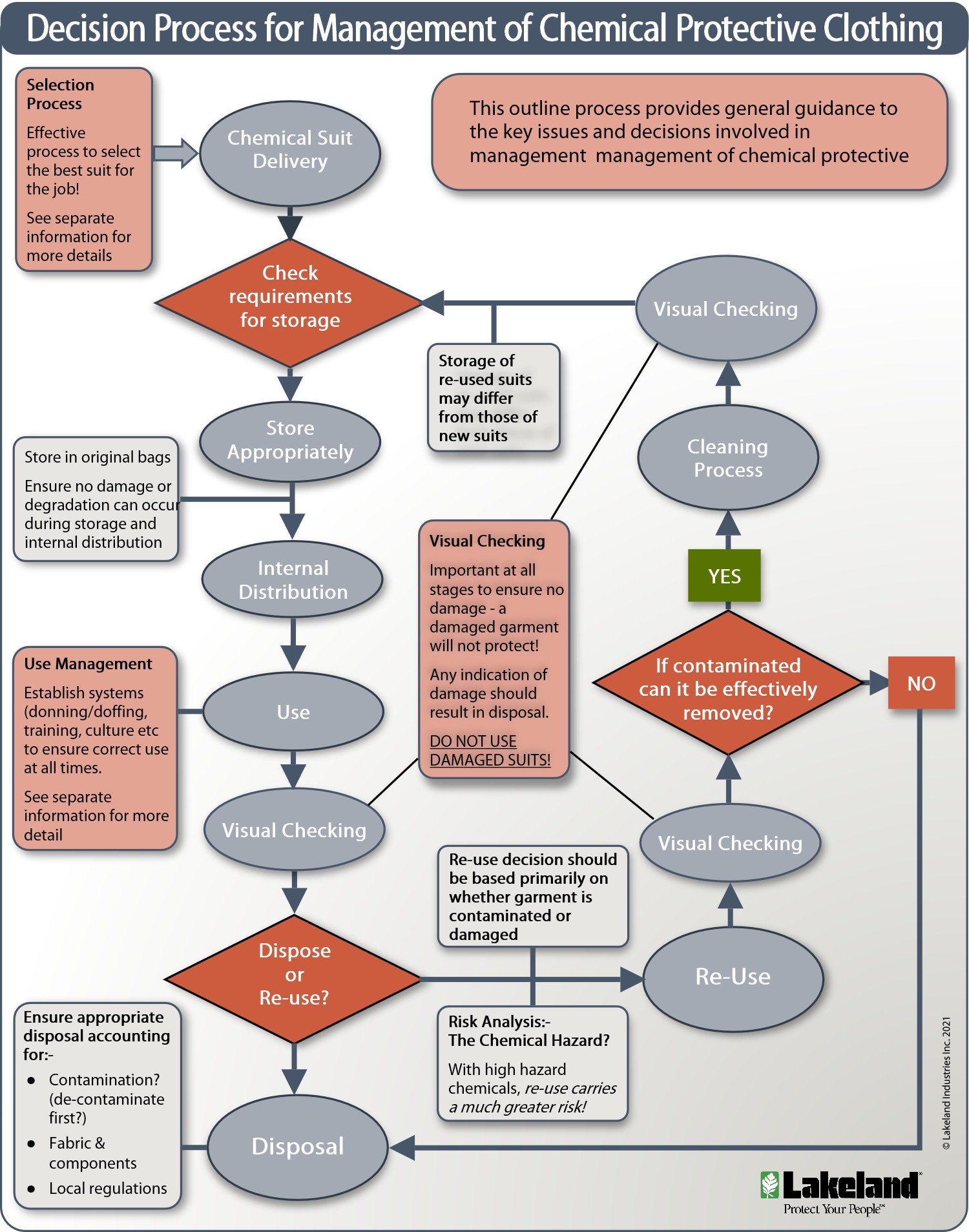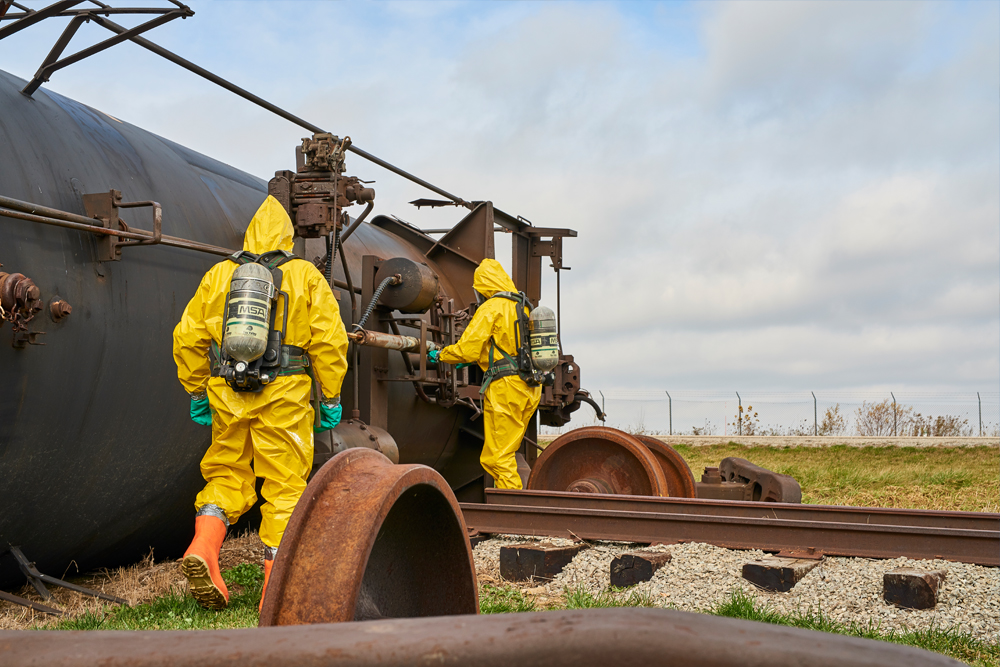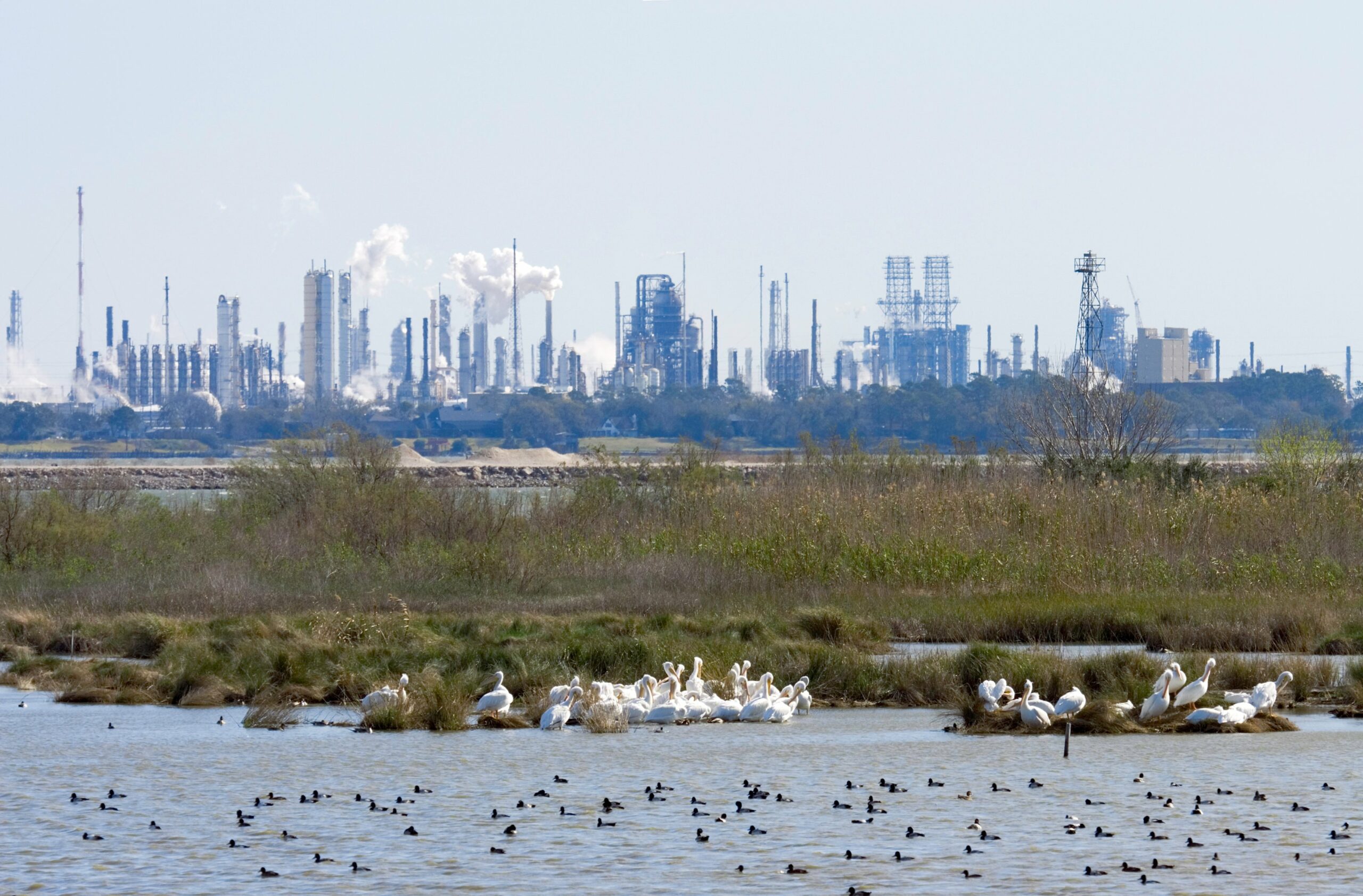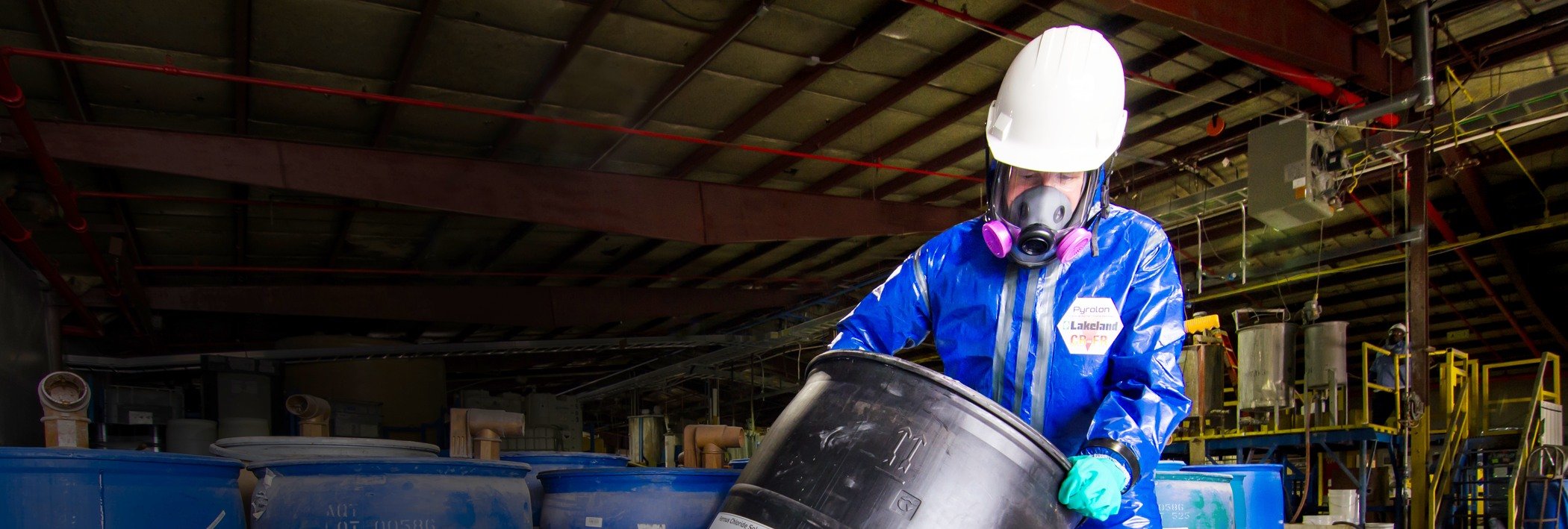Our 13-step guide to selection, management and use of chemical protective suits acknowledges that internal management and control of day to day chemical suit use is at least as important as having a selection process that ensures you have the best suit for the job. In fact, possibly more so; the best suit in the world will perform poorly if not managed and used properly whilst an average suit can do a perfectly adequate job if maintenance and use are managed properly.
The factors and processes involved in ensuring effective management and use of chemical suits are diverse and wide ranging, requiring that Safety Managers take a broad perspective to ensure all the angles are covered.
This blog looks at the key factors that should be included in a management program for your chosen chemical safety clothing.
What Are the Risks of Failing To Establish Effective Programs for Chemical PPE Management?
Whatever the circumstances, the primary requisite of storage and distribution is to ensure that suits are not damaged or that properties such as anti-static dissipative ability are not adversely affected. Failing to do so might mean worn suits, torn seams, ill-functioning components, such as zips, or ineffective properties – all of which might mean the suit does not perform as it should.
Ensuring ongoing proper use of any PPE at all times can be challenging – perhaps more so with chemical protective suits than with other PPE because being based on plastics, covering the whole body, and often have little or no breathability, they are commonly uncomfortable to wear.
So the risk is not only that workers fail to use clothing effectively because of a poorly thought-through donning and doffing process, but that workers take risks to enhance comfort (such as unzipping fastenings) whilst performing a task… thus putting themselves at risk.
The first consideration is the chemical and the hazard it presents. In the case of relatively benign chemicals, the consequences of getting it wrong are less drastic – though even cases amounting to nothing more than minor skin irritation can be costly for a business – especially if repeated on a regular basis.
However, as noted in our blog on “The Hidden Killers”, many chemicals have no immediate effects but can have catastrophic, life-changing or even life-ending effects in the long term, with consequences emerging years or even decades later.
With such insidious hazards the highest levels of care must be taken in managing maintenance and use – and ideally with good safety margins built in.
Furthermore, with more than 8000 chemicals in use daily – and the list is growing – knowledge of harmful effects is commonly limited or even absent entirely, so even with chemicals not particularly known to be harmful, it is often best to play safe and avoid unnecessary contact. Installing effective programs to manage suits on site forms an important part of assuring protection at all times.
On-Site Management of Chemical Safety Clothing
Management of safety clothing includes storage and disposal along with any other issues relating to when suits are not actually in use.
“Disposable or ‘Single-use’ Suits
In the most basic situations, once delivered disposable protective clothing is stored until used and then disposed of immediately after a single use. In most cases, the period of storage is relatively short, measured in days or weeks rather than months. In this case, given the basic storage requirements detailed in our blog, the main requirement is to ensure no damage or degradation occurs during storage or internal distribution.
Disposal of suits is relatively straightforward for uncontaminated suits given that they are widely manufactured using inert polymers such as polypropylene and polyethylene, though complications arise if suits are contaminated – again dealt with in our blog on storage and disposal.
Safety Clothing for Re-Use
Where suits are re-used – the choice invariably being based on whether used suits are contaminated or damaged or not. Much of this subject has been discussed in the blog mentioned above but the essential issues include:-
- Is it contaminated or damaged?
- If contaminated, can it be effectively removed (bearing in mind the possibility of permeation of the chemical into the fabric?)
- The effectiveness of the cleaning process.
- How does storage requirements of re-usable suits differ from new suits?
- Visual assessment at all stages (even before use of new suits) is vital to identify damage. A damaged suit will not protect and should not be used.
The key factors and decisions of a suit management process – whether single use or multi-use are outlined in the flowchart below:-
Control of How Chemical Safety Clothing is Used.
Managing the actual use of disposable PPE is more complex – partly because it is subject to the idiosyncrasies of human behavior.
No matter how much effort goes into installing effective programs for donning and doffing or how correctly a new suit is used on day one, it is a challenge to ensure those programs are always followed consistently during the weeks, months and years that follow – especially given the level of discomfort often experienced when wearing chemical safety clothing.
The processes involved in managing the use of safety clothing involve a range of considerations:-
- Donning & doffing procedures.
- Training specifically related to suit use.
- Training relating to general safety culture.
- Managing “risk tolerance” and effective use of behavioral psychology.
- Considerations of using multiple PPE.
- Achieving the optimum balance between risk and comfort.
These subjects will be dealt with in greater detail in other blogs and e-books but are outlined below
Donning and Doffing
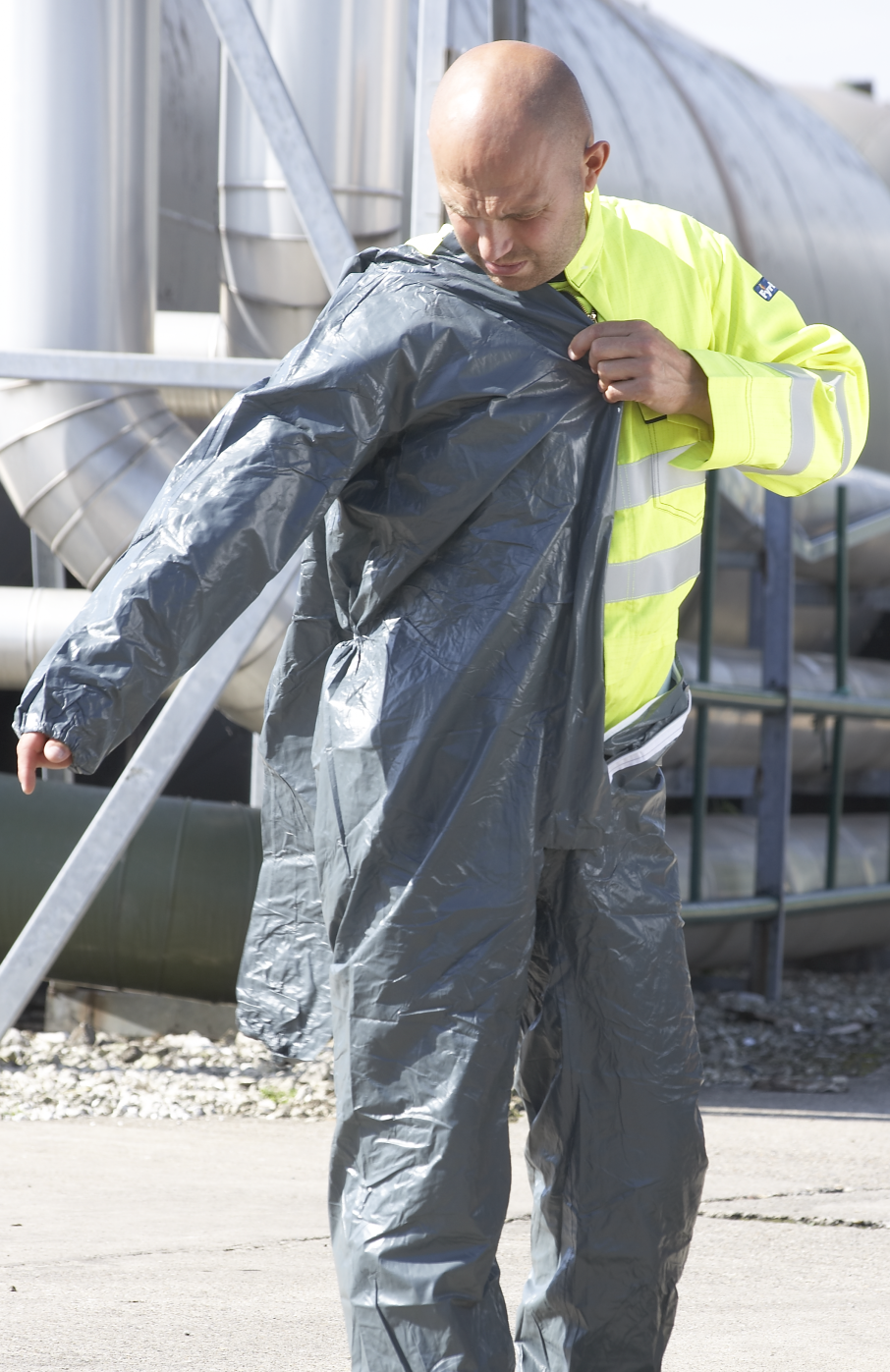
A targeted risk analysis of donning and doffing itself might be useful in highlighting risks, hazards and important issues. Following such a risk assessment, a procedure can be set up.
However some of the factors a properly constructed donning and doffing process should address include:-
- Requirements specific to the suit in use and application (for example, some claimed Type 3 chemical suits are actually only Type 3 if additional tape is applied to the zip cover).
- A logical process to ensure the suit is donned and doffed in a way to minimize risk and ensure the suit is worn correctly.
- Consideration of compatibility with other PPE worn and ensuring PPE is donned in an appropriate order.
- A requirement to always work in pairs (ideally always the same pair) for both donning and doffing – and to ensure final checks are performed before entering a critical area.
- Special consideration to issues around doffing – especially if suits may be contaminated and where suits are intended to be re-used.
Training Specifically Related to Suit Use
The issues important whilst a suit is actually in use might incorporate:-
- The established donning and doffing processes – with highlighted do’s and don’ts.
- Issues relating to specific design elements and limitations of the suit such as the zip and front fastening (for example, ensuring a good seal with any tape used). Information, including limitations of suits is often available in User Instructions provided with all CE marked PPE.
- Issues to be addressed might include:-
- Issues such as how suit is secured or sealed with or to other PPE such as hood, gloves, boots etc.
- Understanding of the chemical hazard.
- Understanding the limitations of the suit.
- Instruction on identifying and addressing symptoms of heat exhaustion, dehydration or other ailments that might occur during use.
Programs Including Training Related to Establishing and Reinforcing a Safety Culture
Establishing a “safety culture” is increasingly recognized as an effective way to improve on-site safety and is a wide ranging subject which must always be addressed.
Issues specifically related to chemical safety clothing and other PPE might include:-
- Understanding of the hazard; especially in the case of chemicals that have long term effects and when contamination might not even be noticed.
- Encouraging constant monitoring of suits in use and the importance of immediately stopping work and removing and/or replacing PPE if damage is apparent.
- Ongoing messaging to reinforce the importance of not taking risks such as unfastening suits in a critical area – it matters!
Managing “Risk Tolerance” and Effective Use of Behavioral Psychology Techniques
Risk Tolerance is the almost inevitable tendency we have to grow used to risk over time, unconsciously conclude that it will never happen, and take an increasing view that “it will be OK”, with the consequence that over time workers are increasingly likely to take risks – especially to reduce discomfort.
We will address this issue in greater detail in another blog, but the key issues are:-
- Understanding the hazard and potential consequences of taking risks (especially important with chemicals having long term effects).
- Developing a safety culture that keeps safety a first priority.
- Encouraging a “whistle-blower” safety culture – so that users constantly watch for PPE and safety issues in themselves and others – and are encouraged to address them without fear.
- Using ongoing training and behavioral psychology techniques to support all the above.
As in the case of encouraging a safety culture, this is a wide-ranging and ongoing subject with no easy answers or solutions; the battle against “risk tolerance” will never be won and must always be fought.
Considerations of the Risks when Using Multiple Items of Chemical PPE
PPE is rarely used in isolation. Chemical safety clothing is usually used with at least respiratory equipment such as a face mask, chemical protective gloves and chemical boots.
In some cases, other PPE might also be worn – perhaps a harness and lanyard if working at height, or additional clothing for flame and heat protection.
This has been addressed in detail in our blog here, but there are two challenges to consider:-
1. How different PPE used together works effectively as an ensemble
It is an essential truth of chemical protection that, all things being equal, a chemical is far more likely to penetrate through gaps in the PPE ensemble than it is to permeate through the chemical suit fabric. What measures can be taken to minimize this risk?
- Adhesive tape is commonly used to seal the join between sleeves/gloves or hood/mask. But how effective is the seal… and how do you know?
- Other options include wearing a suit with incorporated visor and boots, with attached boots or technology to join sleeves to gloves such as the “Push-Lock” Glove connection system.
- Ensuring that the use of one item of PPE does not compromise another. For example:
- If a harness and lanyard is used with disposable clothing is it worn outside or inside? Outside it is quite likely to damage the clothing. Inside means attaching the lanyard is a problem. How can this be managed?
- In industries such as petrochemical, both flame or heat and chemical protection are needed at the same time. Given that standard disposable chemical suits are flammable plastics how can both be provided safely?
Achieving the Optimum Balance between Risk and Comfort
Finally, a safety manager should always address the issue of comfort – not just because it makes the lives of workers easier (although that in itself should be sufficient motivation) but because:-
- There are clear benefits derived from improving comfort that go right to the company’s bottom line.
- Comfort is a safety issue. The greater the discomfort of workers, the greater the likelihood they will take risks during use to minimize it.
The balance between comfort and protection is always a compromise. More comfort generally means less protection and vice versa. For this reason, the first question in identifying how far safety can be compromised in favor of comfort relates to the hazard presented by the chemical; the first principle is that protection cannot be compromised at all in the case of highly toxic chemicals.
However, where compromise is possible – and this should be highlighted by the risk analysis – there are numerous ways chemical PPE can be made more comfortable – both relating to the suit itself and to management of the task.
- Ensuring the best suit for the job is selected. It is not uncommon for chemical safety clothing to be over-specified so heavier suits than are necessary are used. This is sometimes a result of a lack of knowledge about the hazard; improved understanding of toxicity, permeation rates, safe-wear-times and the use of tools such as “Permasure” might indicate opportunities to not only improve comfort but to reduce cost!
- More expensive suits are often better designed and provide better fit and freedom of movement, contributing to improved comfort. The additional cost is often offset by the benefits derived. The cheapest suits are not always the most cost-effective.
- Use of alternative designs; two or three piece suits or special designs such a “Cool Suits” as described in the video below:-
Where compromising protection is not possible then consider looking at the task and work environment:-
- Use shorter working periods, more frequent resting, regular hydration and placement of additional hydration stations or provision of “safe-rooms” wear suits can be partially removed for short breaks.
- More imaginative solutions such as re-arranging work days so that particular tasks are done at cooler times of the day, such as morning.
Whilst some might look upon comfort as a luxury issue there are many good reasons why it is worth the safety manager spending time on finding ways to improve it. Over time the benefits can be considerable.
Conclusion… Managing the Use of Chemical Safety Clothing Requires A Holistic Approach
Managing and controlling chemical protective PPE whilst on-site is every bit as important as ensuring you have selected the clothing that will provide the optimum protection. You can spend valuable time on establishing a selection process that ensures you have the perfect chemical suit for your workers…
- … but if your application demands effective static dissipative properties and the suit is stored in a way that compromises those properties, disaster may ensue.
- … or if a worker unzips the front fastening whilst working because he is uncomfortable or does not recognize the risk involved and danger it creates then all that valuable time may count for little.
The outline in this blog addresses many of the issues and factors that might be important. Yet every application requiring PPE is different and can be diverse and wide ranging.
It is important that safety managers take a holistic and open-minded approach to establishing the procedures and systems to manage the maintenance and use of chemical safety clothing on site. That way you minimize the risk of missing even a minor element.
And when it comes to potential “hidden killer” chemicals what seems like a minor issue may not be minor at all.

